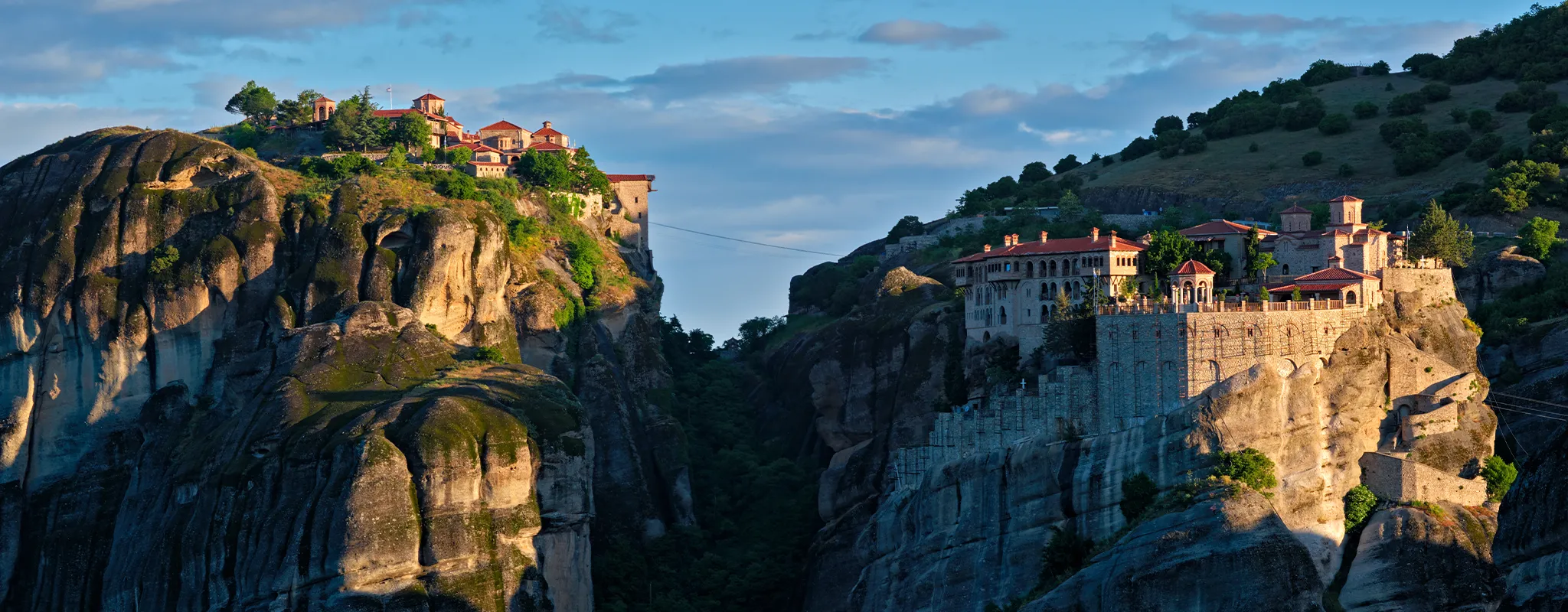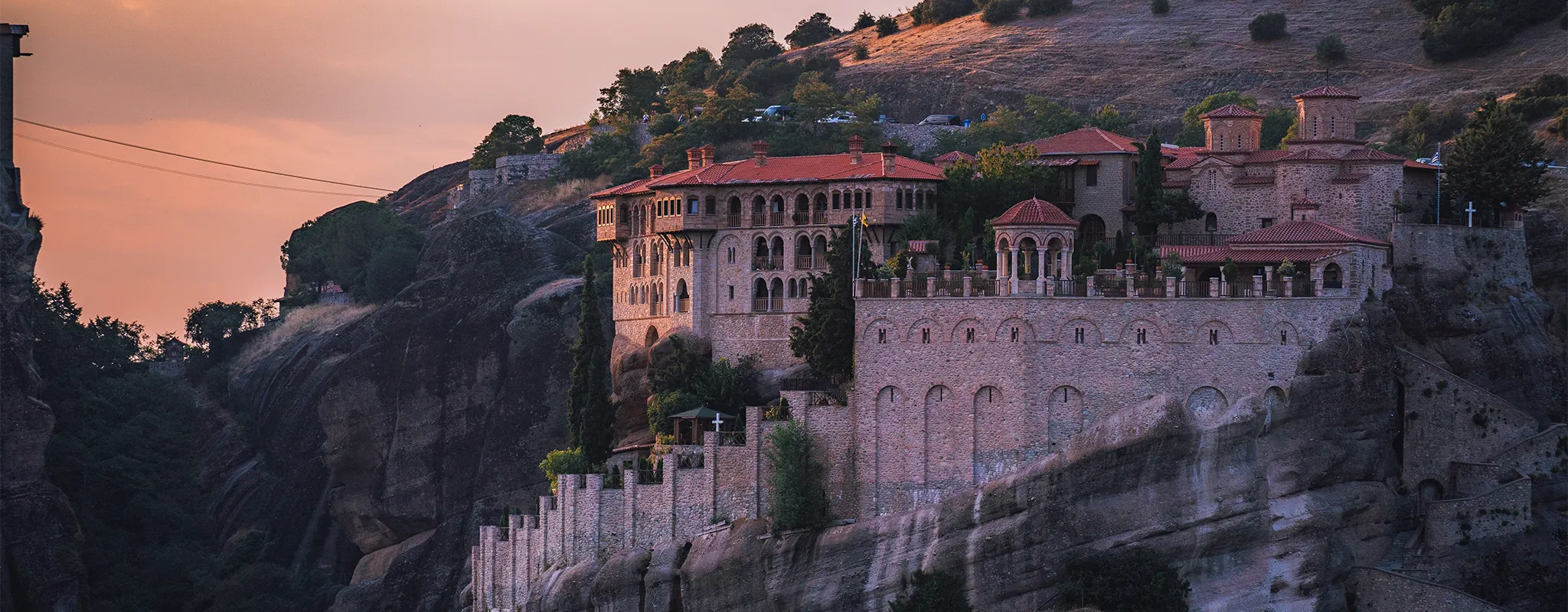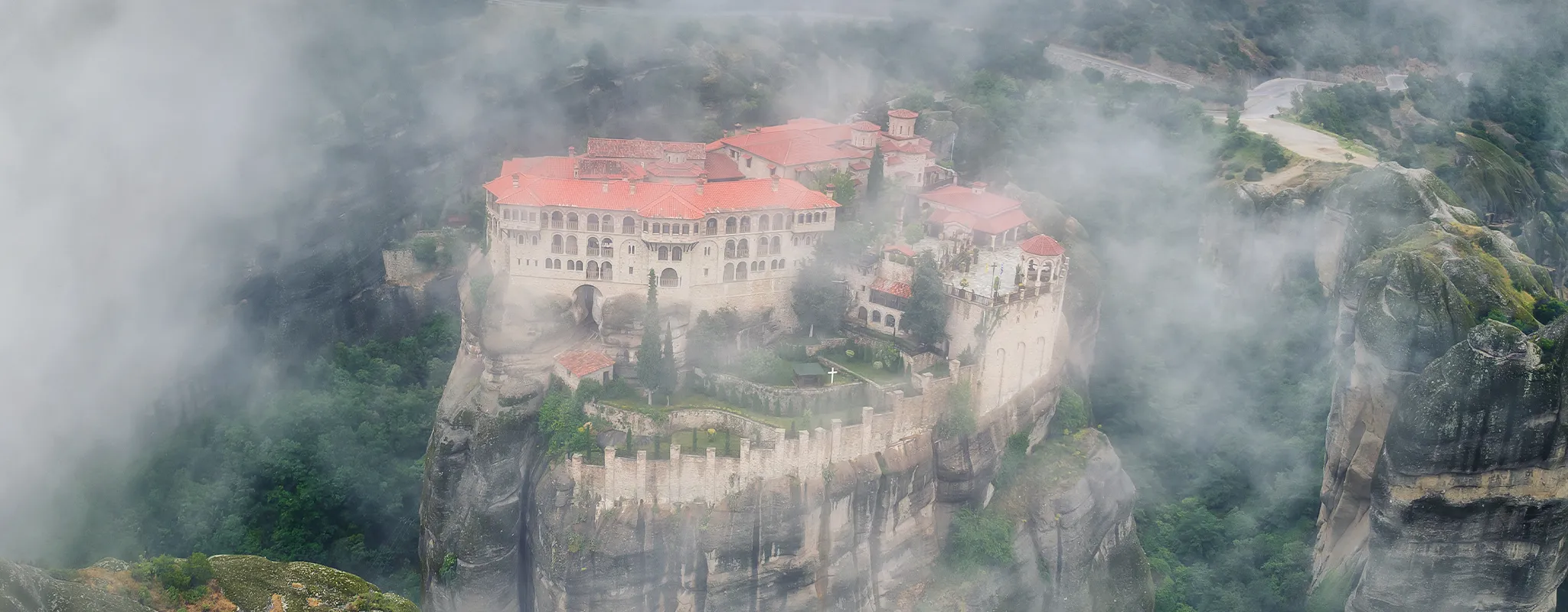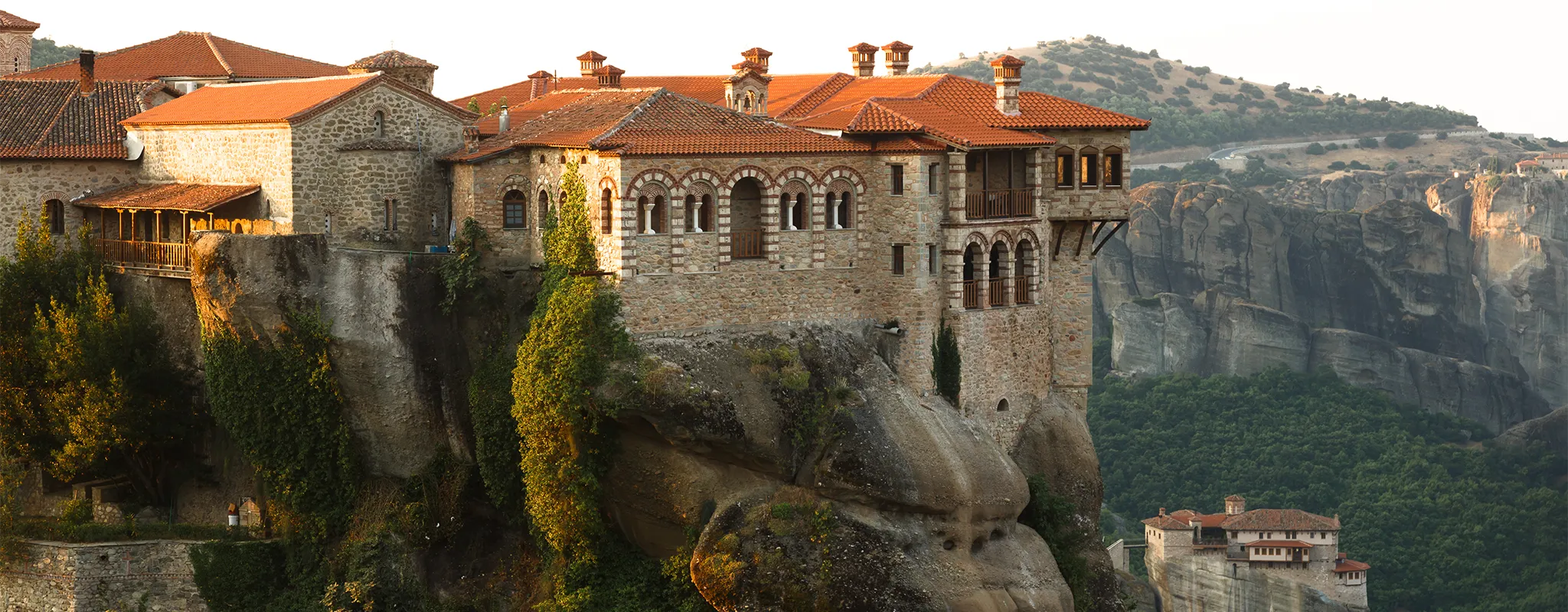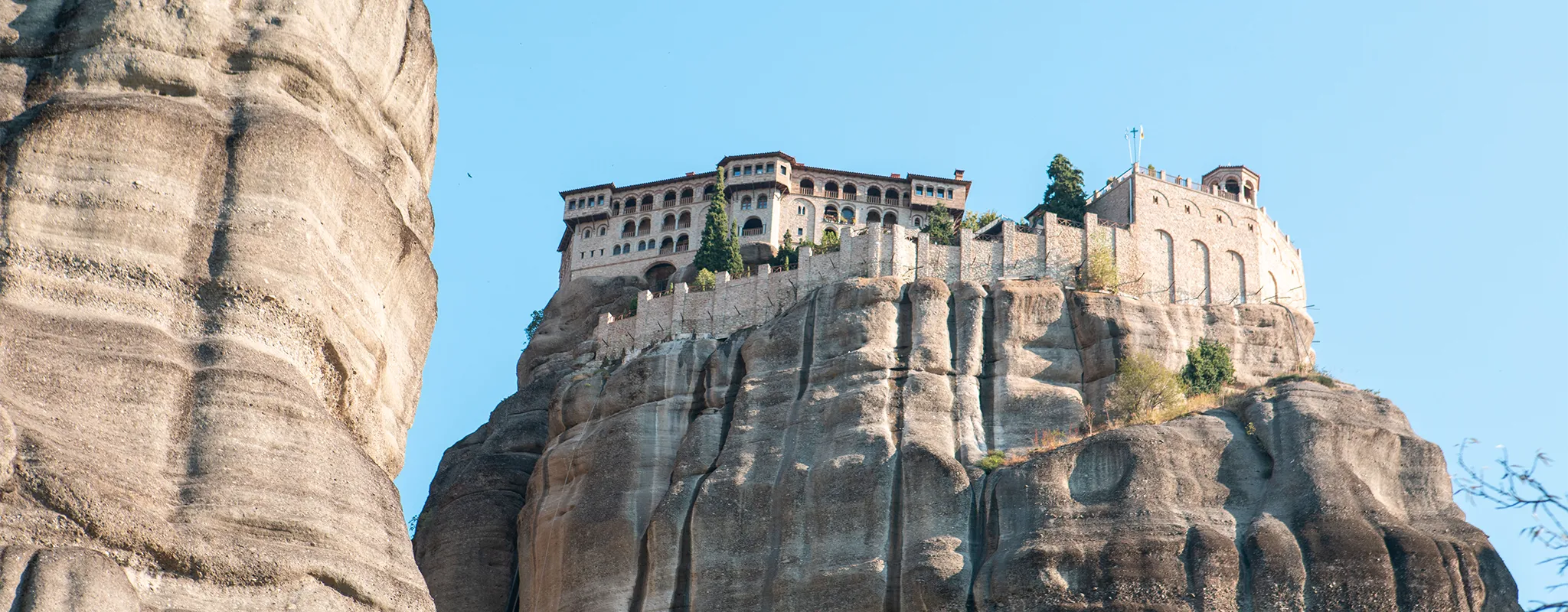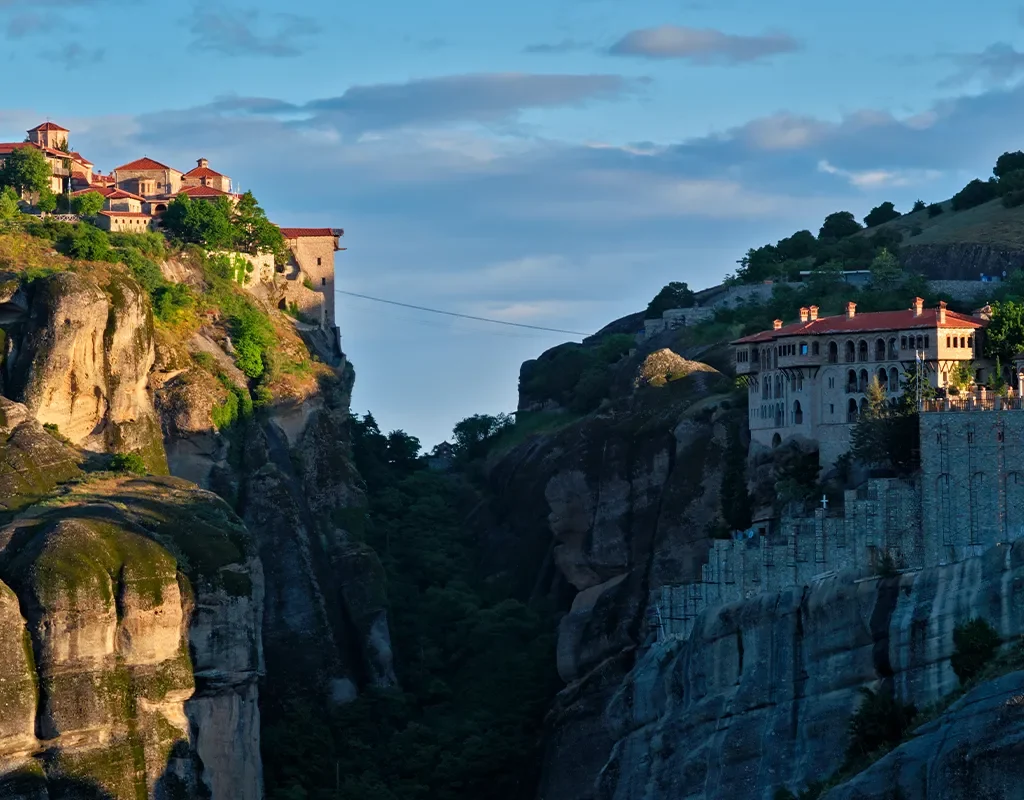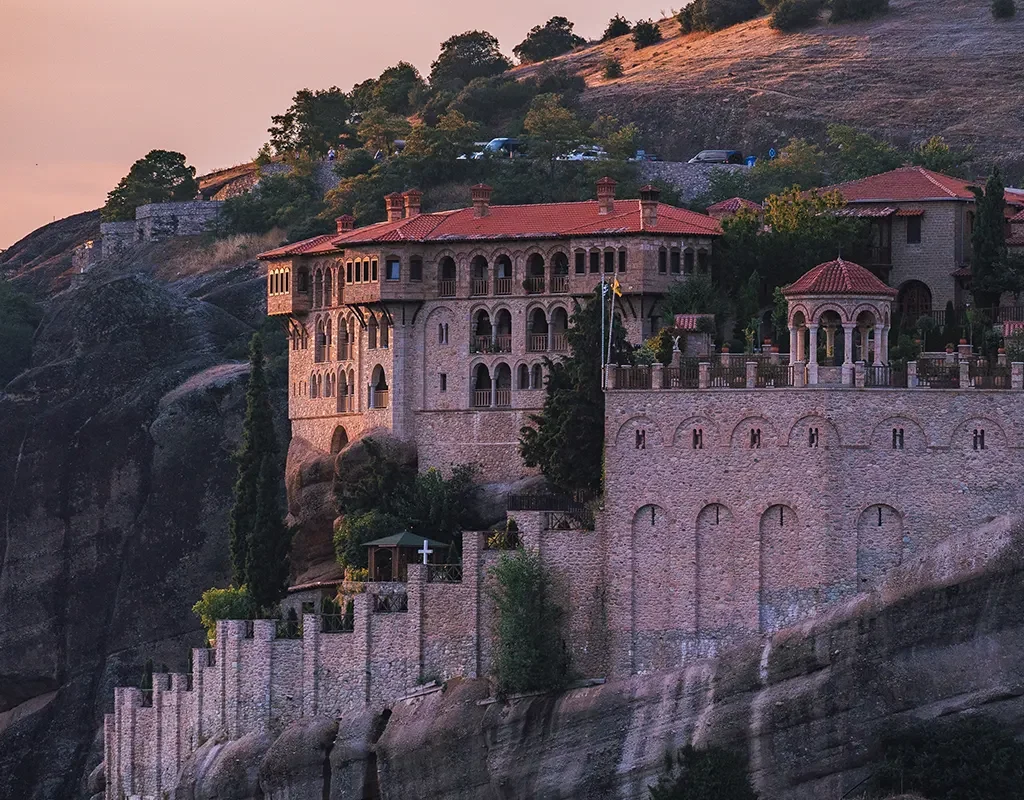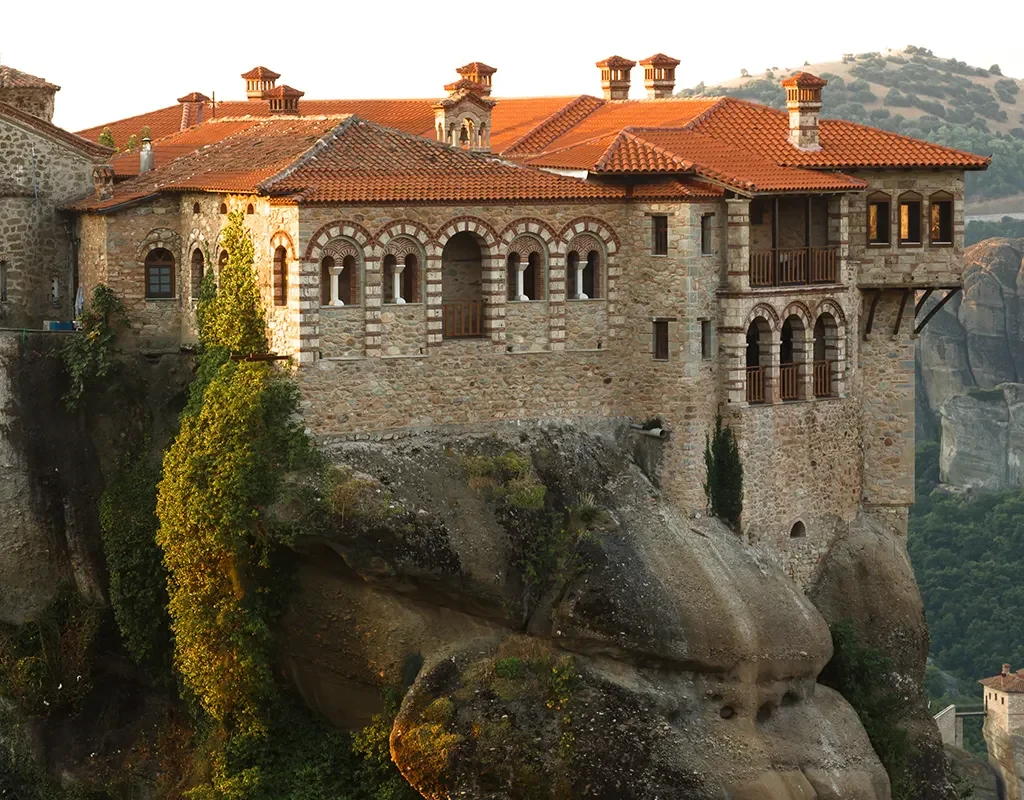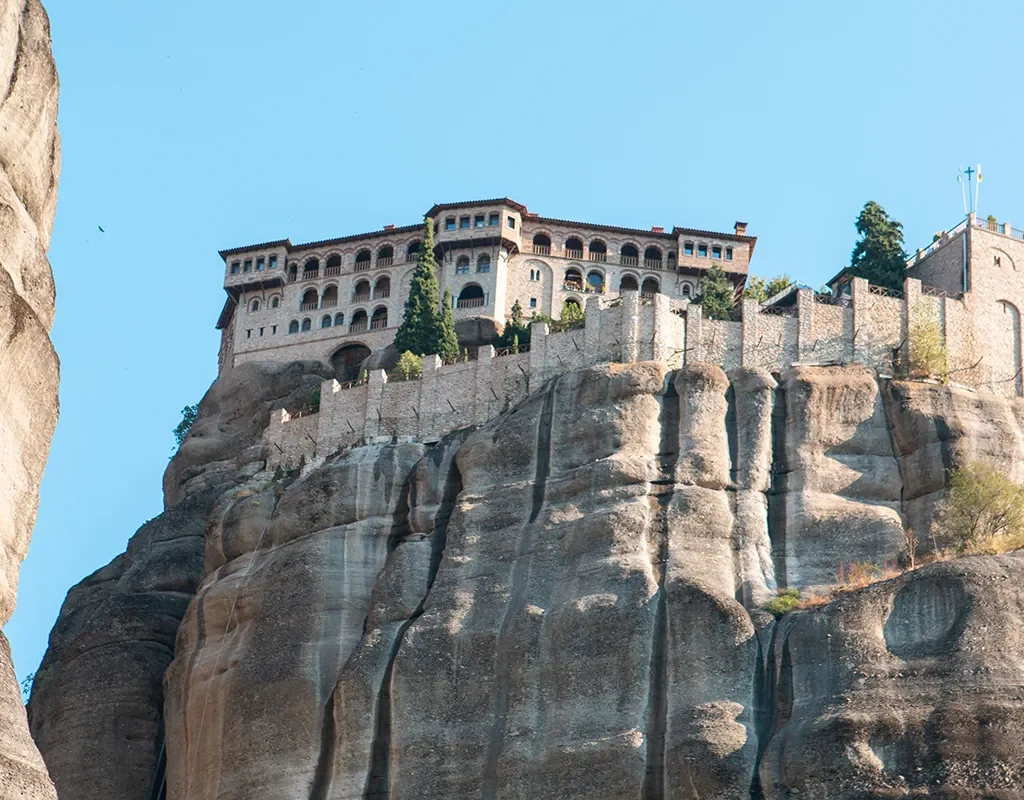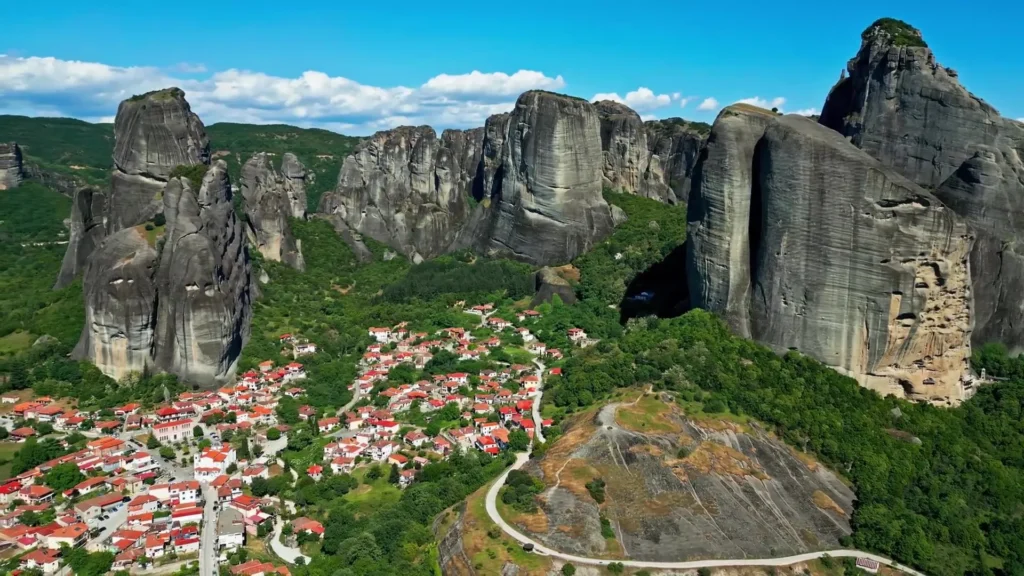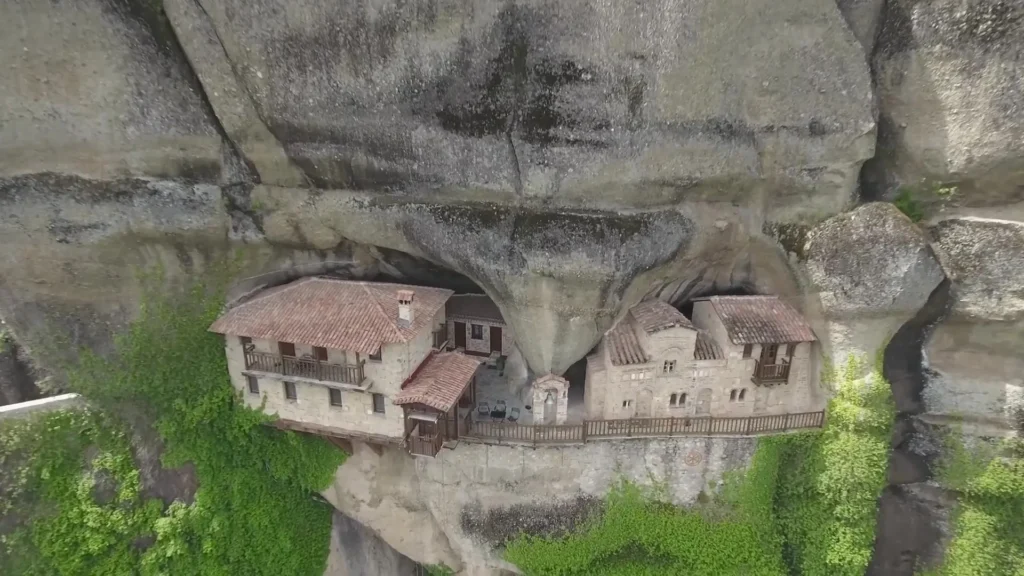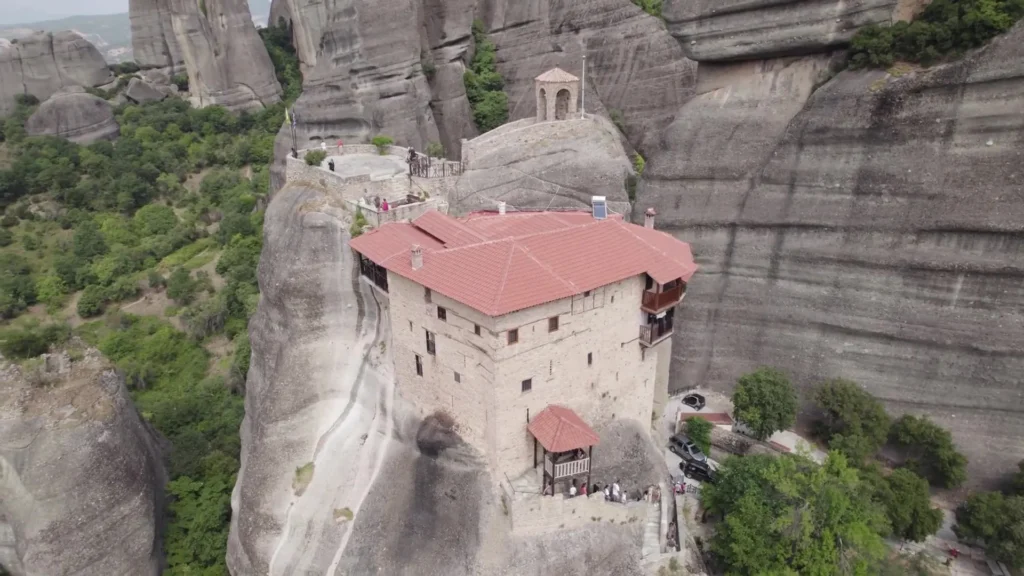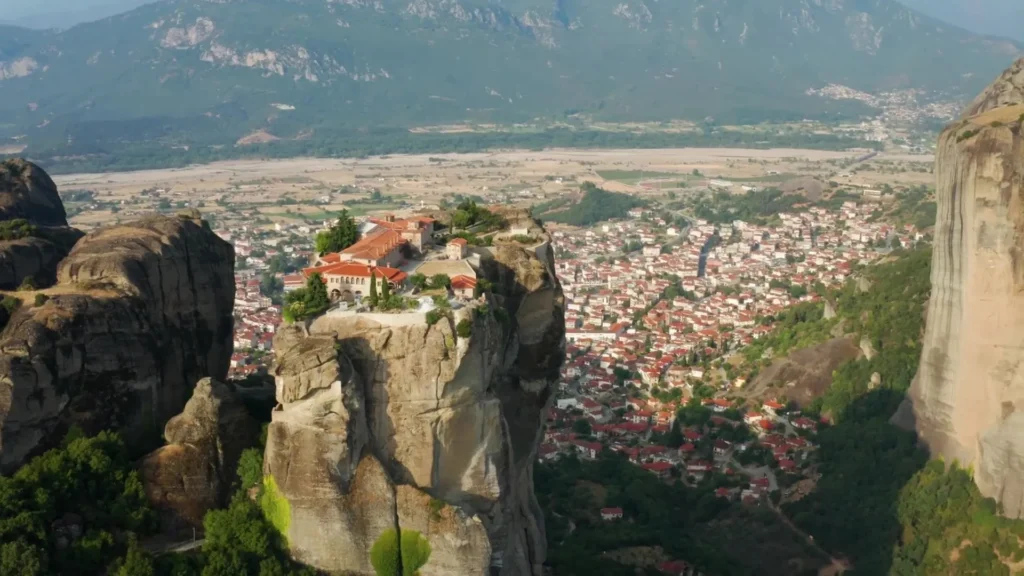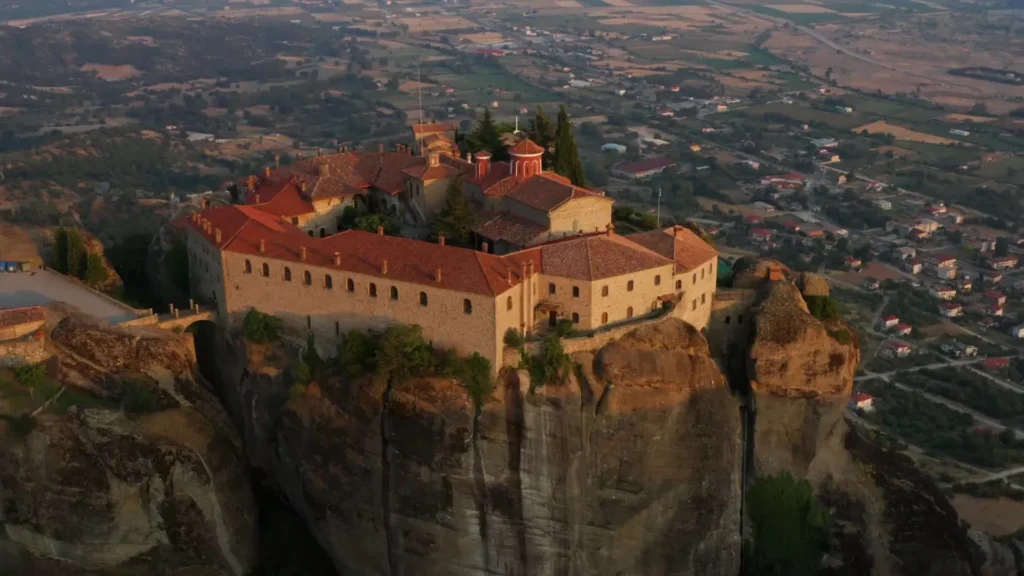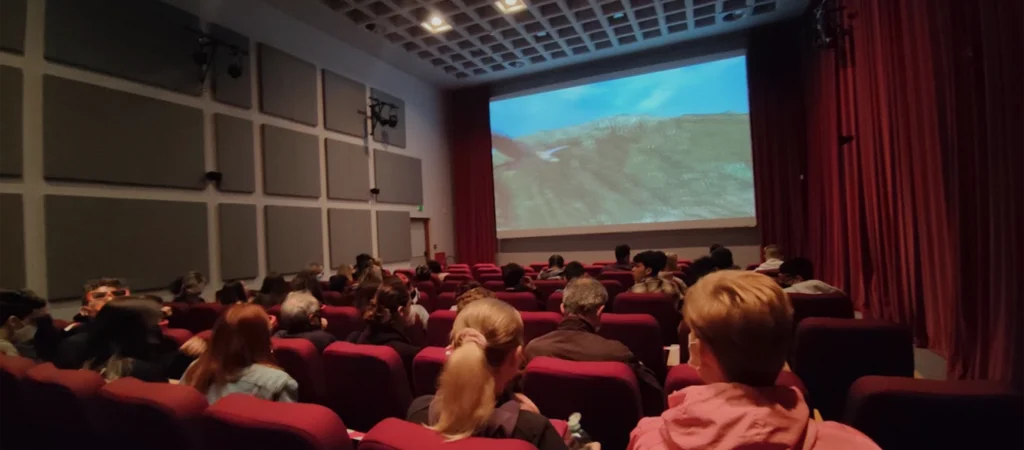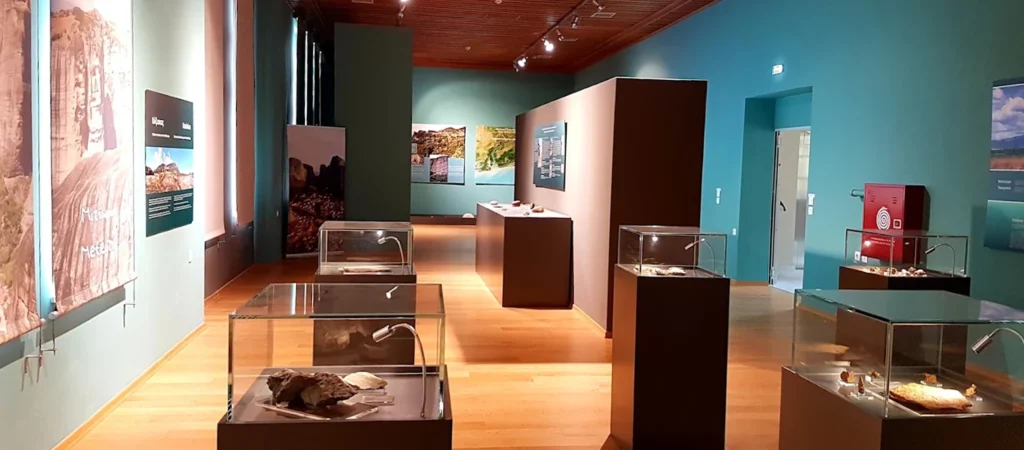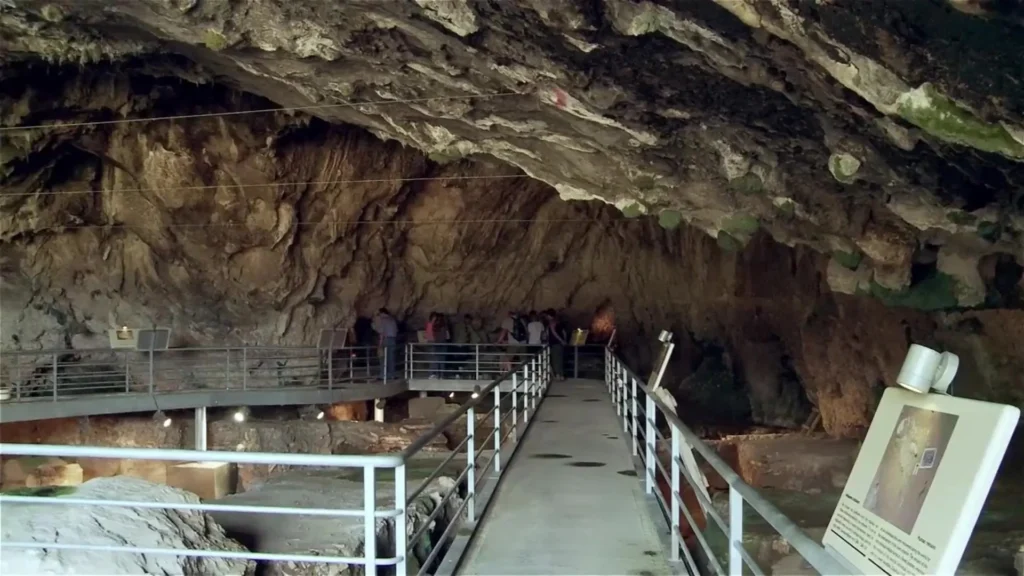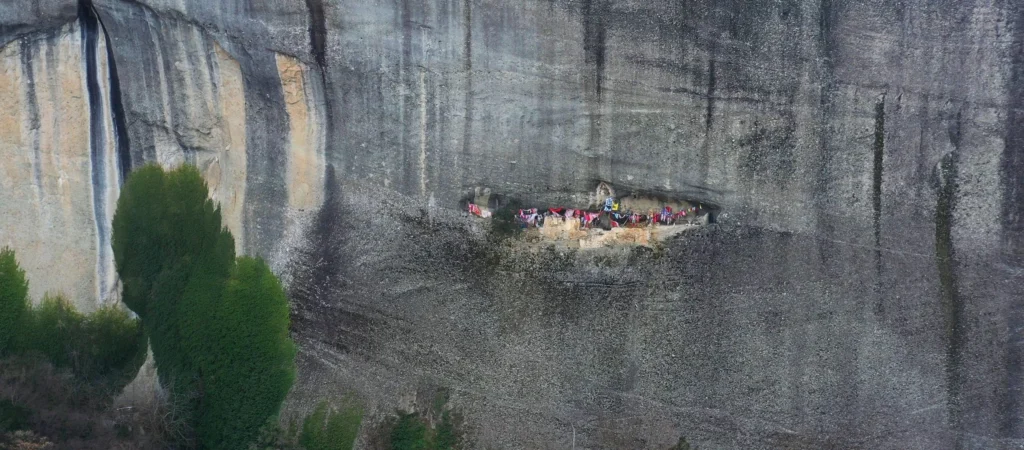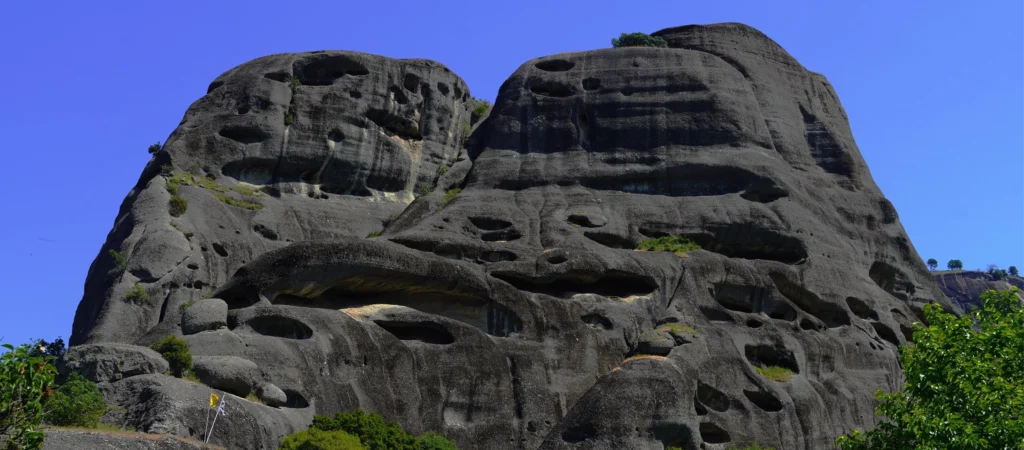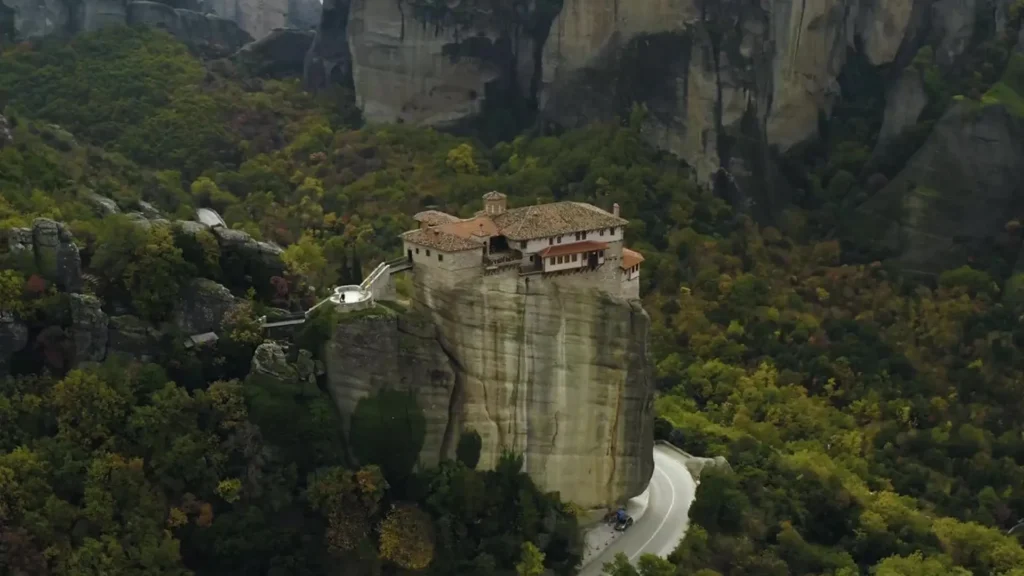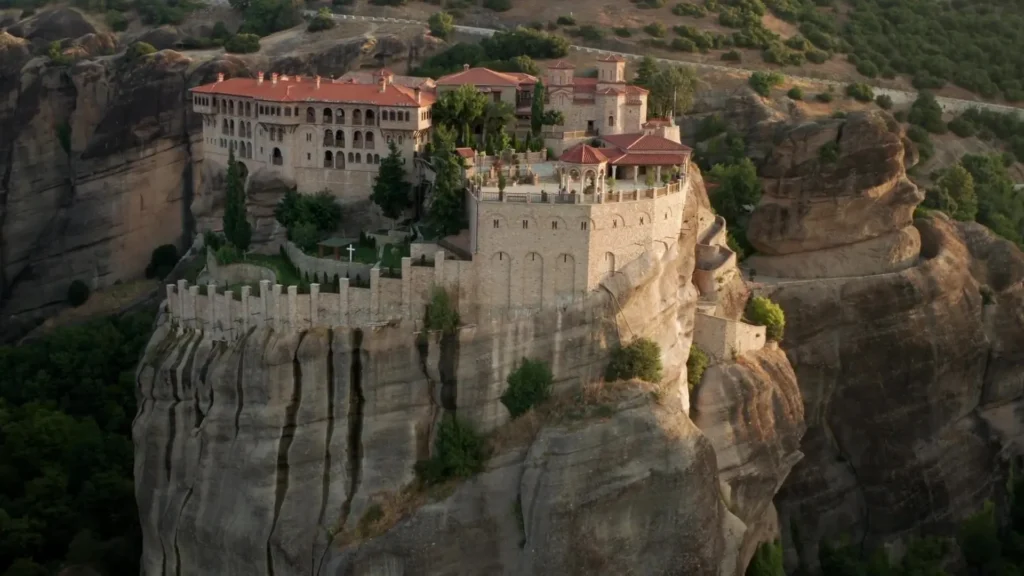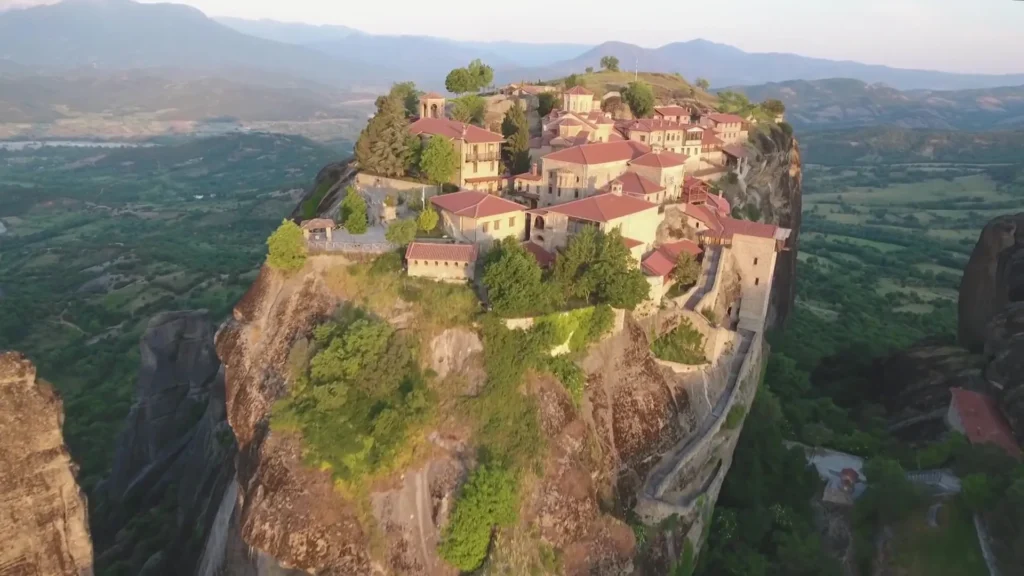Good to Know
- Admission: Ticket required
- Stairs: +150
- Accessibility: Not accessible
- Dress code: Special dress code required
- Restrooms: Available
- Museum: Available
- Gift Shop: Available
Visiting Hours (UTC+2/UTC+3)
Summer: 1/4 - 31/10
- Monday 09:00 - 16:00
- Tuesday 09:00 - 16:00
- Wednesday 09:00 - 16:00
- Thursday 09:00 - 16:00
- Friday CLOSED
- Saturday 09:00 - 16:00
- Sunday 09:00 - 16:00
Winter: 1/11 - 31/3
- Monday 09:00 - 15:00
- Tuesday 09:00 - 15:00
- Wednesday 09:00 - 15:00
- Thursday CLOSED
- Friday CLOSED
- Saturday 09:00 - 15:00
- Sunday 09:00 - 15:00
The Timeless Allure of Varlaam Monastery
Varlaam Monastery is the second largest monastery of Meteora, located directly opposite the Great Meteoron, perched on a rock that instantly draws your attention.
Its story begins in the 14th century, when the hermit Varlaam first settled here and gave the monastery its name. True growth, however, came in the 16th century with brothers Theophanes and Nektarios Apsaras from Ioannina, descendants of a Byzantine family. They renovated the Chapel of the Three Hierarchs, built the tower with the winch in 1536, and constructed the present-day Church of All Saints in 1541.
The monastery’s frescoes are remarkable, created in three distinct phases: first in 1548 by the renowned Frangos Katelanos, then in 1566 in the narthex by Kontaris and Georgios, and finally, minor additions between 1780–1782. Throughout the centuries, Varlaam Monastery continued to flourish, operating a manuscript workshop and receiving generous donations from rulers of Wallachia (in present-day Romania).
Monk Christopher made a lasting impact in the 18th century, preserving valuable archives and copying historic texts—enhancing the monastery’s role both spiritually and nationally.
Today, visiting Varlaam Monastery feels like stepping into the living history and architecture of Meteora. As you climb the steps, you’ll come across the restored guesthouse, the katholikon with its ornate dome, the iconic tower with the winch, the museum with rare relics, and the Chapel of the Three Hierarchs (accessible with permission from the monks). The monastery blends rich tradition, an atmosphere of quiet contemplation, and panoramic views. It’s a perfect choice for anyone seeking authentic contact with the history and spirituality of Meteora.
